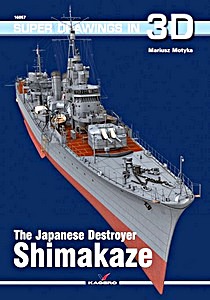Akizuki-Class Destroyers - In the Imperial Japanese Navy during World War II (Legends of Warfare)
The destroyers of the Akizuki "Autumn Moon" class were very different from the standard fleet type of Imperial Japanese Navy destroyers inaugurated with the Fubuki class. They were designed for the protection of the Imperial Japanese Navy's carrier task forces, and in order to achieve this they carried a particularly powerful antiaircraft armament and had an extremely long radius of action.
However, only 12 out of a planned number of 39 entered service, and they arrived too late to play a crucial role in the decisive carrier battles of World War II. Despite this, their history is of particular interest since the Akizuki class foreshadowed the postwar fleet escort.
This is the history of their design and construction, and it relies heavily on Japanese source material and includes numerous photos and drawings.
Caractéristiques
| Auteur : | Lars Ahlberg, Hans Lengerer |
|---|---|
| Présentation : | 128 pages, 23.5 x 24 x 1.9 cm, relié |
| Illustration : | 125 photos et dessins en N&B |
| Editeur : | Schiffer Publishing Ltd (USA, 2023) |
| Série : | Legends of Warfare |
| ISBN : | 9780764365096 |

Akizuki-Class Destroyers - In the Imperial Japanese Navy during World War II
Langue : anglais
Disponible sur Amazon - paiement sécurisé et livraison rapide
Acheter sur Amazon FRAcheter sur Amazon BE
Acheter sur Amazon CA








